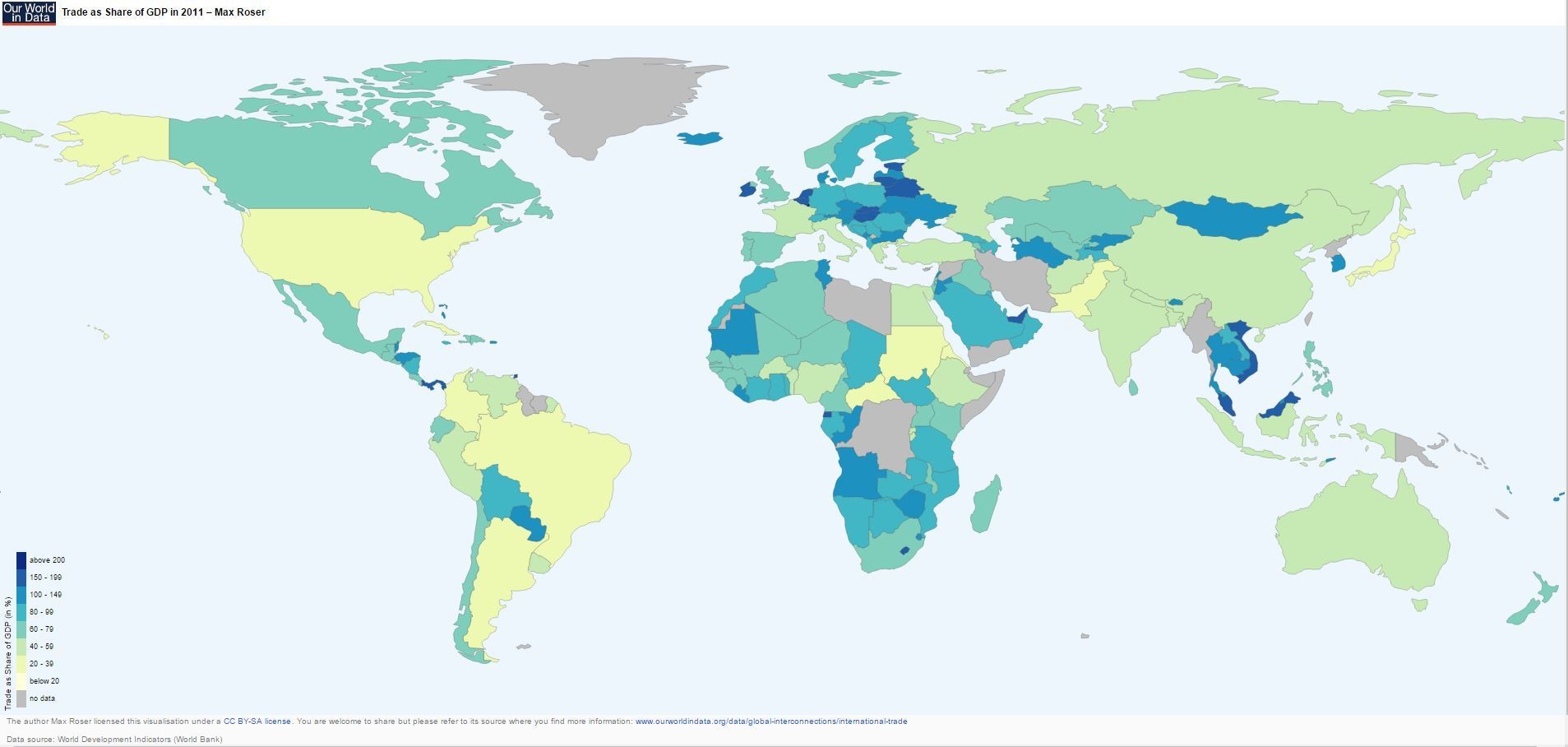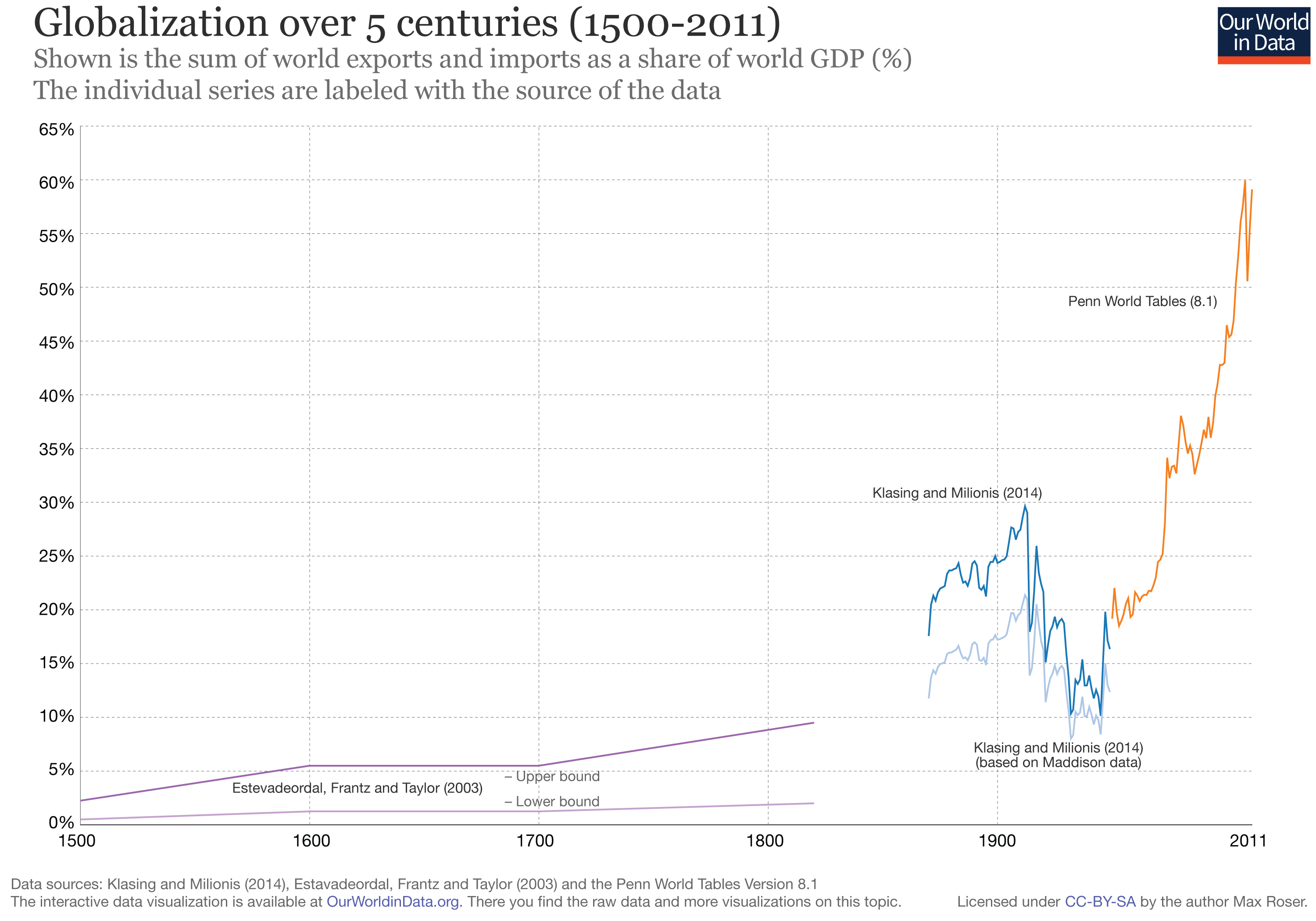This is what 500 years of globalization looks like

The rise of smartphones is just one example of globalization in the modern world.
Image: REUTERS/Dado Ruvic
Stay up to date:
Trade and Investment
The iPhone is designed in California, built in China and exported to consumers across the globe. The rise of smartphones and the impact they are having on developing economies is just one example of globalization in the modern world.
As the map below shows, international trade is now a vital component of most national economies:

You can view the full interactive map here.
This was not always the case – 500 years ago, international trade was nearly non-existent. So how did international trade become the globalized affair it is today?
A new set of charts from Our World in Data explains how this happened by illustrating the evolution of international trade over half a millennium. The chart below shows the flows of international trade over the past five centuries.

According to the author and creator of the charts, Max Roser, the data shows that international trade has a history with four distinct parts:
Colonial powers dominate (1500-1800)
Between the years 1500 and 1800, international trade was limited: the sum of exports and imports never exceeded 10% globally.
Trade also grew slowly, and the average compound growth rate was less than 1% over this period. As the chart shows, European colonial powers dominated international trade.
Accept our marketing cookies to access this content.
These cookies are currently disabled in your browser.
Globalization begins (1800-1914)
International trade began to increase in the 19th century. The First and Second Industrial Revolutions saw technological advances in communication and transport, as well as political and economic liberalization.
This first wave of globalization saw the emergence of the international economy, as worldwide trade grew annually by more than 3%.

Click here to view the full interactive chart.
The World Wars (1914-1945)
Growth in international trade faltered in 1914, at the start of the First World War, as nations began to adopt protectionist policies. This decline in international trade lasted until the end of the Second World War.
Accept our marketing cookies to access this content.
These cookies are currently disabled in your browser.
Post-war growth (1945-present)
After the end of the Second World War, international trade began to grow rapidly, as protectionism gave way to the still ongoing second wave of globalization.
Accept our marketing cookies to access this content.
These cookies are currently disabled in your browser.
Since 1945, most countries have turned away from isolationism in favor of internationalism – and today international trade is now more important than ever.
The data was originally collated and published by Our World in Data: Mohamed Nagdy and Max Roser (2016) – ‘International Trade’. Published online at OurWorldInData.org.
Have you read?
Don't miss any update on this topic
Create a free account and access your personalized content collection with our latest publications and analyses.
License and Republishing
World Economic Forum articles may be republished in accordance with the Creative Commons Attribution-NonCommercial-NoDerivatives 4.0 International Public License, and in accordance with our Terms of Use.
The views expressed in this article are those of the author alone and not the World Economic Forum.
Related topics:
Forum Stories newsletter
Bringing you weekly curated insights and analysis on the global issues that matter.
More on Equity, Diversity and InclusionSee all
Katy Talikowska
August 18, 2025
Jürgen Karl Zattler and Adrian Severin Schmieg
August 18, 2025
Katica Roy
July 23, 2025
Elena Raevskikh and Giovanna Di Mauro
July 23, 2025
Veronica Frisancho
July 22, 2025




